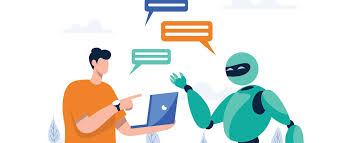5 Ways ChatGPT Can Make Your Job as A Teacher Easier

by Dr. Kelly Keane (with a bit of help from ChatGPT)
ChatGPT, a large language model that generates human-like responses to a wide range of prompts, is taking over the Internet . . . . and now you can let it take over your classroom! Here are 5 ways that teachers can use ChatGPT to increase their productivity and make their jobs easier.
- Generating Lesson Plans
One of the primary ways that ChatGPT can assist teachers is by generating lesson plans. Teachers can input a topic, or a set of keywords related to a topic, and ChatGPT can generate a detailed lesson plan based on that input. This can save teachers a considerable amount of time and effort in researching and creating lesson plans from scratch. Want to take it a step further? Check out https://curipod.com/ – an amazing new kind of artificial intelligence (AI) that is specific for teachers who want to harness the power of AI to generate interactive and engaging lessons. Enter a topic, learning objectives and standards, and a grade level and let curipod work its magic!
- Answering Students’ Questions
Another way ChatGPT can be useful for teachers is by answering students’ questions. If a student asks a question that the teacher is not sure about, they can input the question into ChatGPT and get an accurate and detailed response. This can save teachers time and help them provide more accurate and thorough answers to their students and it allows teachers to model a constructive use of ChatGPT.
- Providing Feedback on Student Work
ChatGPT can also assist teachers in providing feedback on student work. Teachers can input a piece of student work, and ChatGPT can analyze the work and provide feedback on areas that need improvement. This can save teachers time and help them provide more thorough and constructive feedback to their students. Not sure about this? Try it by prompting ChatGPT to evaluate a short piece of student writing and see what you think.
- Generating Quizzes and Tests
ChatGPT can also be used to generate quizzes and tests. Teachers can input a set of questions and criteria, and ChatGPT can generate a customized quiz or test that meets those criteria. This can save teachers time and effort in creating quizzes and tests from scratch and can also ensure that the quizzes and tests are comprehensive and accurate. While most teachers are implementing a structured curriculum complete with its own quizzes and tests, this idea works well to generate quick, on-the-spot formative assessments that can provide useful data to guide the day’s instruction.
- Providing Language Translation
Finally, ChatGPT can be used to provide language translation. If a teacher has a student who speaks a different language, they can input a sentence or phrase into ChatGPT, and it can translate the text into the desired language. This can be useful for teachers who have students who are not fluent in the language of instruction and can help ensure that these students are able to understand the material. It can also be used to communicate with parents who are non-native speakers. While it certainly shouldn’t be relied upon exclusively for translation services, ChatGPT certainly can make it easier when used appropriately.
ChatGPT is a powerful tool that can assist teachers in a wide range of tasks, from generating lesson plans to providing language translation. By leveraging the power of this tool, teachers can increase their productivity and make their jobs easier, allowing them to focus on what they do best – educating and inspiring their students.
About the Author
Dr. Kelly Keane is Assistant Teaching Professor and Program Director of Educational Technology. Want to know more about the online Loyola Educational Technology program? Find more information on the program at https://loyola.edu/edtech and follow the Loyola Ed Tech program on Twitter, Instagram, and TikTok – @LoyolaET

